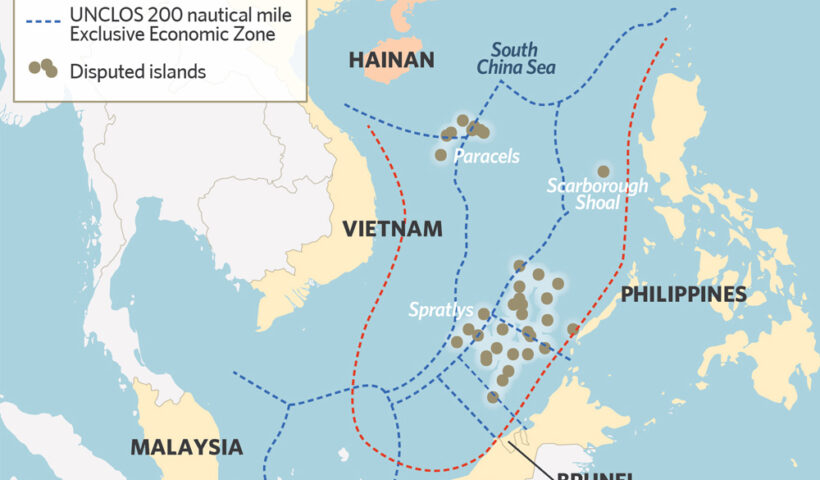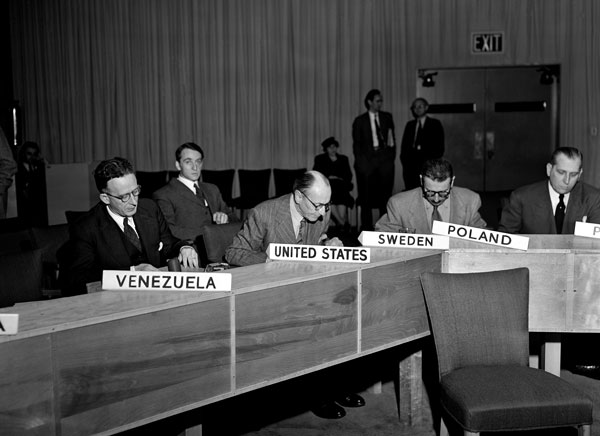Delimitation of the territorial sea between States with opposite or adjacent coasts
Where the coasts of two States are opposite or adjacent to each other, neither of the two States is entitled, failing agreement between them to the contrary, to extend its territorial sea beyond the median line every point of which is equidistant from the nearest points on the baselines from which the breadth of the territorial seas of each of the two States is measured. The above provision does not apply, however, where it is necessary by reason of historic title or other special circumstances to delimit the territorial seas of the two States in a way which is at variance therewith.
This provision in a near-verbatim reproduction of the equivalent provision of the 1958 Territorial Sea Convention. It reflects a compromise reached at UNCLOS I – and again at UNCLOS III – between two general proposed methods of delimitation.
Tag: territorial waters
Legal Status of the Territorial Sea (international law of the sea, LOSC, cases)
The territorial sea is a marine space under the territorial sovereignty of the coastal State up to a limit not exceeding 12 nautical miles measured from baselines. The territorial sea comprises the seabed and its subsoil, the adjacent waters, and its airspace. The landward limit of the territorial sea is the baseline. In the case of archipelagic States, the inner limit of the territorial sea is the archipelagic baseline. The outer limit of the territorial sea is the line every point of which is at a distance from the nearest point of the baseline equal to the breadth of the territorial sea.. Legal Status of the Territorial Sea (international law of the sea, LOSC, cases), 12-nautical-mile territorial sea, 1909 Grisbadara case, Article 2(3) of the LOSC, Legal Status of the Territorial Sea, LOSC, territorial sea, territorial waters
View More Legal Status of the Territorial Sea (international law of the sea, LOSC, cases)The Hague Conference for the Codification of International Law (1930)
The first intergovernmental attempt to codify the law of the sea was the 1930 Hague Conference for the Codification of International Law. The Hague Conference was instigated by the League of Nations between 13 March and 12 April 1930, and was attended by forty-seven governments and an observer, i.e. the USSR. The Conference aimed to codify international law concerning three subjects, namely nationality, State responsibility and territorial waters. With regard to territorial waters, two issues, among various issues discussed at the Conference, are of particular interest: the nature of the rights possessed by a State over its territorial sea, and the breadth of the territorial sea.
. The Hague Conference for the Codification of International Law (1930), Codification of International Law, customary law, Hague Conference, Scandinavian countries, territorial waters



